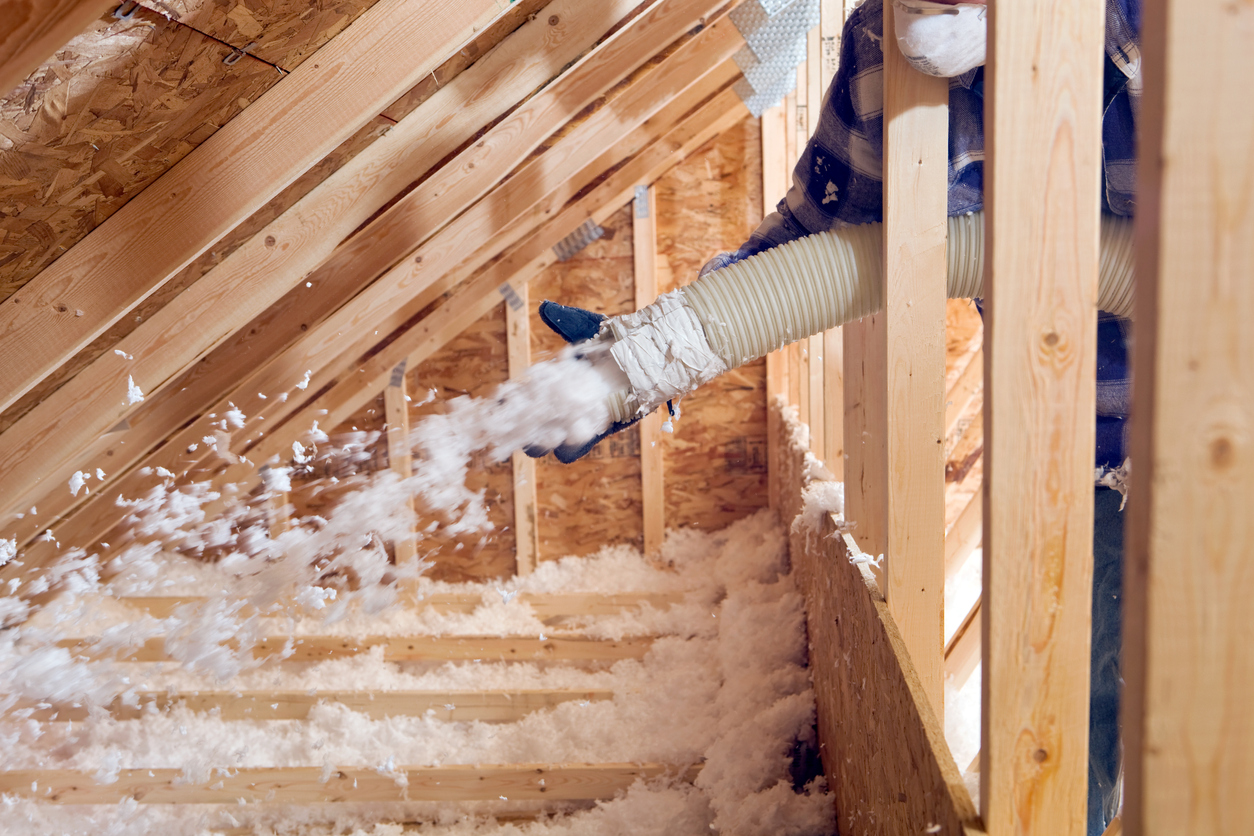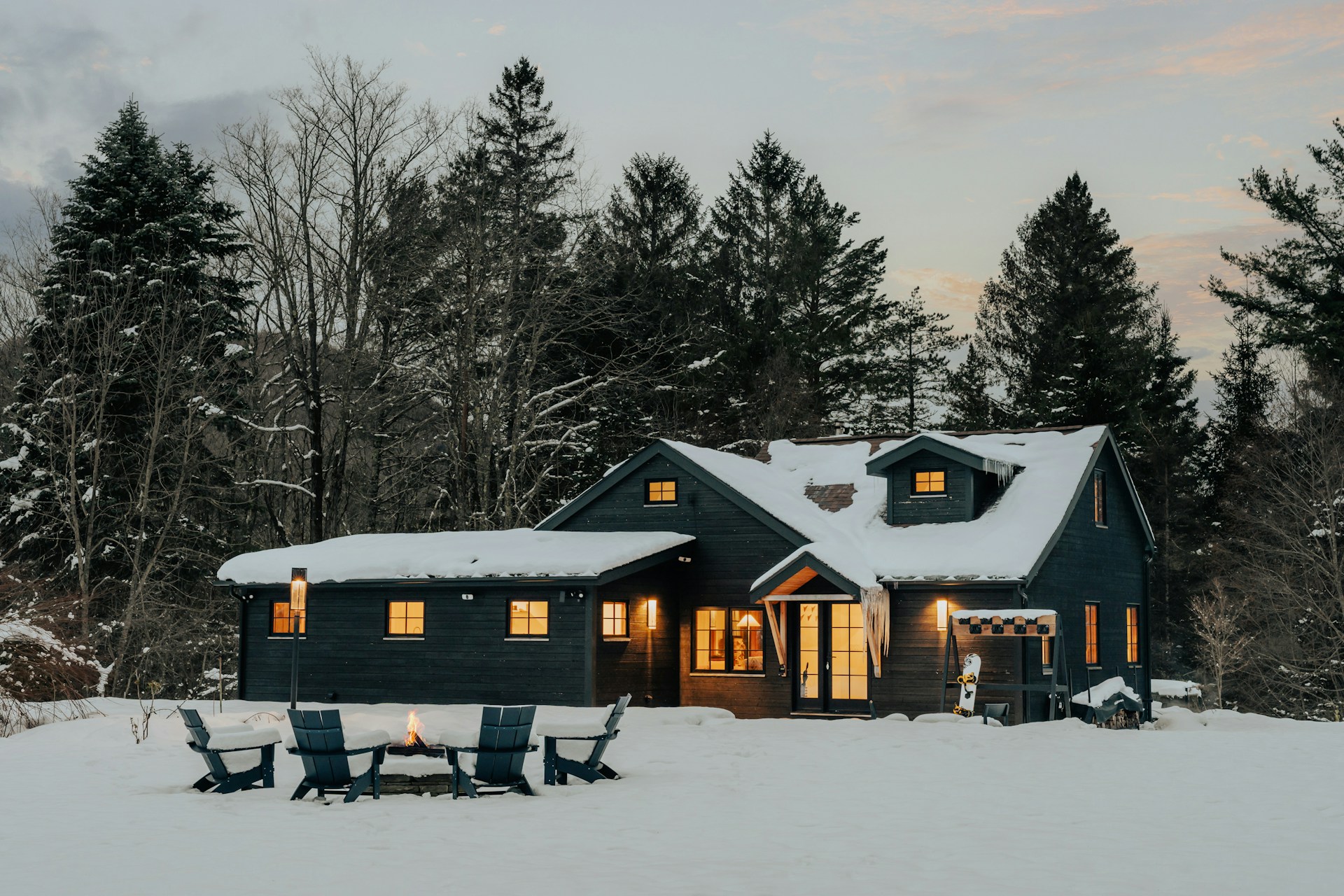The attic is the most important areas of your home to insulate.
That’s because heat rises, so in the winter, heat escapes through the attic and into the cold air outside. In the summer, the reverse happens: warm air displaces the cool, air-conditioned air in your home through your attic. This often makes upstairs rooms uncomfortably hot.
If your attic is not properly insulated, this can lead to higher heating and cooling bills year-round and discomfort for your family. That’s why it’s essential to make sure your attic has enough insulating materials.
The amount of attic insulation you need is dependent on a number of factors, like your climate, the type of home you live in, and the insulation materials used. Blown-in fibreglass is one of the most cost-effective methods of insulating an attic. Other common materials include spray foam and cellulose.
So, how much insulation do I need in my attic?
Most attics need between 10 and 14 inches of blown insulation to achieve an R-value of 38, which is recommended in much of North America. In colder climates like Ontario, Canada, between 19 and 22 inches of blown insulation is required to achieve the recommended R-value of 60.
Everyone’s situation is different, so it is important to understand the different factors that go into calculating the right level quantity of insulation for your attic.
Understanding the R-value of Attic Insulation
The R-value of attic insulation is a factor that must always be taken into account when calculating how much material you need.
R-values measure how well a material can resist heat flow. A higher value indicates better thermal insulating quality. High R-values are essential to keeping a home warm in winter and cool in summer. In warmer climates, the recommended R-value might be R-38, whereas colder climates like Ontario, Canada might require R-60.
Inadequate attic insulation is one of the leading causes of high energy bills, as heat escapes through the roof. Therefore, ensuring that your attic has a high R-value is essential to keeping your home comfortable all year round.
R-values for Different Materials
There are a handful of different options for attic insulation available on the market, so it is important to do your research to find the right type for your situation.
Different materials have distinct R-values, so choosing the right product for your needs is vital. Some of the most popular options include:
- Blown-in fibreglass: R-2.2 to R-2.7 per inch
- Fibreglass batts: R-4.3 per inch
- Spray foam: R-4 to R-6.5 per inch
- Cellulose: R-3.2 to R-3.8 per inch
Just because one material has a higher R-value, it doesn’t mean it is the best option for your home. Each method comes with trade-offs. If you are unsure about which type to choose, you can always consult with a professional to get expert advice.
How Much Insulation Do I Need?
The recommended level of insulation for attics varies depending on where you live.
Generally, the calculation depends on the following:
- R-value of existing materials
- If they are contaminated and must be removed, the calculation is easy: it’s R-0.
- Size of your attic
- Materials used
- Target R-value (primarily based on your climate zone)
You may also need more or less product depending on factors like the age of your home, the type of heating and cooling you have, and whether your attic is properly ventilated.

Recommended R-Value for Attic Insulation Canada
Homeowners in Canada should be aware of their region’s R-value recommendations for their attics.
In general, installations should be made with a minimum of R-40 insulation, though R-60 is recommended for maximizing your home’s energy efficiency, especially in colder parts of Canada.
The recommended level of attic insulation differs depending on your climate zone. In general, the colder your climate, the higher the R-value (a thermal resistance measure) you will need.
Why Insulating Your Attic is Essential
Proper insulation is essential for saving energy and money and preventing thermal discomfort in your home. Low R-values costs homeowners an extra 20% on average on their annual heating and cooling bills. Additionally, weak attic insulation can lead to ice dams, which can cause serious damage to your roof.
If you’re considering upgrading your insulation, you should keep a few things in mind. First, installations can be expensive, so getting an estimate from a professional is important before you make any decisions. Second, you’ll need to inspect your attic for potential problems before installing.
A professional attic insulation upgrade can help you keep heat inside your house during winter, and outside during the summer. This can also extend the life of your HVAC equipment and save you money on your energy bills by reducing the workload on your furnace and air conditioner!
When Do I Need to Add More Insulation?
Often, homeowners can tell when their home needs upgraded insulation if it has not been upgraded in over twenty years or if they feel cold drafts and inconsistent internal temperatures. An increase in your energy bill is another likely sign that your existing material is losing its ability to resist heat.
In some cases, you can visually see when new insulation is required. When you inspect your attic, it is important that you don’t see any low spots in the insulation: it should be consistently applied. Sometimes there is a good level of material in the centre of the attic, but little to none along the eaves.
If you can spot any of your floor joists, that is an immediate sign that you need to add more insulation.
Homeowners should also schedule preventative inspections of their attic insulation regularly, as water damage or pests can contaminate the material and eliminate its R-value altogether.
Final Thoughts
Not only will proper attic insulation save you money on your energy bills, but it will also keep your home more comfortable throughout the year. If you’re not sure what level of insulation you need or what type would be best for your home, consult a professional for help.
Once you have installed adequate attic insulation, you will notice a significant difference in your energy bills. Not only will you be saving money, but you will also be doing your part to reduce your carbon footprint.




